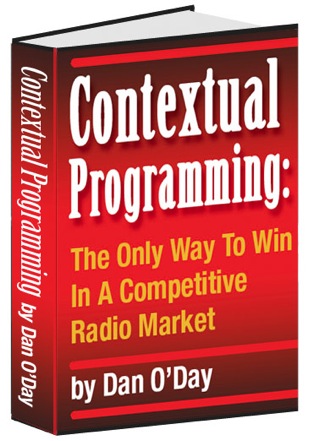October, 1997 (continued):
A week after my radio seminars in Wisconsin, I flew from Los Angeles to Chicago and then to Peoria, where the next morning I was to present The Total Quality Service Radio Station for Wally Gair and the Illinois Broadcasters Association. (This was my sixth time working with Wally and the IBA.)
The convention was held at the Pere Marquette Hotel, a local landmark.
I figured that for dinner I’d have my usual lonely Room Service club sandwich (or, in a rare moment of luxury, perhaps a chicken stir fry).
But from the moment I stepped into the hotel, I was flooded with advertising for their Carnegie Restaurant: menus posted in the lobby, in the elevator, everywhere… along with awards and rave reviews the restaurant had garnered.
I read the menu. Gee, some pretty good sounding dishes here. Maybe I’ll actually order a real dinner for a change. In fact, I’m going to do just that! I deserve a little pampering now and then.
So I went downstairs to the restaurant….only to discover that it’s closed on Sundays. (None of their in-hotel advertising mentioned that.)
So it was back to my room for some…yep, stir-fry chicken.
The next morning, prior to the seminar, I went to the hotel’s coffee shop — which also provided the Room Service food. I explained that I would be conducting a seminar until Noon and would have to leave for the airport at 12:45, and I would like to arrange for a club sandwich to be delivered to my room at 12:00.
“We don’t take pre-orders,” the coffee shop woman said.
“Well, if I wait until 12:00 to place the order, by the time it arrives I’ll have to leave for the airport.”
“Well, we don’t take pre-orders. If you want, I can write it down, but there’s no guarantee you’ll get it on time.”
I asked for the name of the hotel manager, went to his office, and explained the situation.
“That shouldn’t be any problem at all, Mr. O’Day. I’ll be happy to take care of that for you.”
Now, why do I bother sharing this story?
Because on the wall of the manager’s office was a large “Mission Statement” to the effect that the hotel staff is dedicated to doing “everything we can” to make their guests’ visits enjoyable.
The mission statement was adorned with dozens of signatures; I assume they were signatures of hotel employees.
But although the mission statement was on all the wall, signed by all the employees, that message was not lived up to by their Room Service manager.
Ironically, the seminar I gave that morning was all about Customer Service. I see this all too often — inside and outside of radio stations: a fine-sounding mission statement but no systems in place to make sure the company lives up to its promise.
The manager, by the way, was quite nice. And my sandwich was waiting for me when I got back to my hotel room.


